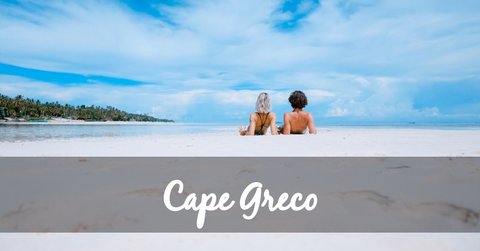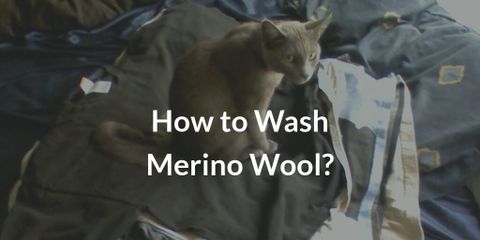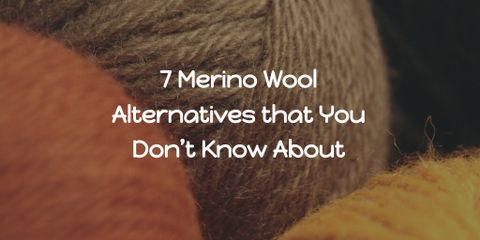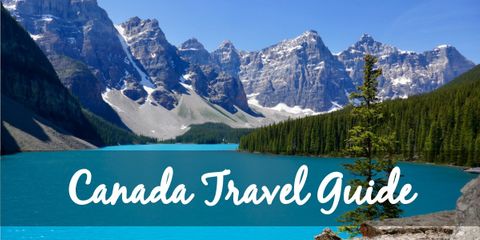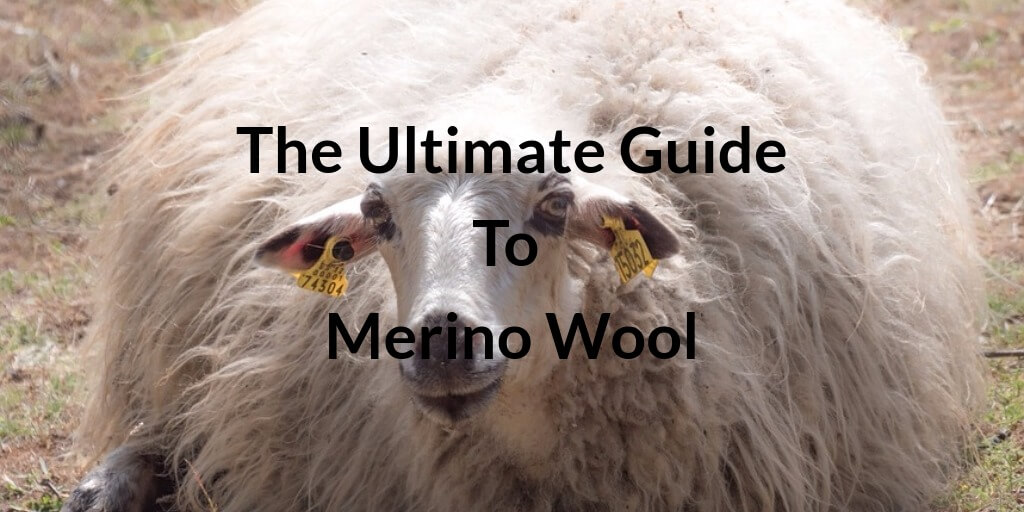
The Ultimate Guide to Merino Wool
So much of what we use today is man-made or processed or synthetic. It’s a change to use a natural, sustainable product that has been used for clothes and household linens for thousands of years.
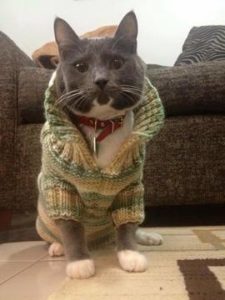 Merino wool is one of the softest wools around and is comfortable to wear in all seasons. It is eco-friendly, it is produced by a combination of grass, sunshine, air, and water, it is renewable, as new wool grows on the sheep every year, and it is biodegradable.
Merino wool is one of the softest wools around and is comfortable to wear in all seasons. It is eco-friendly, it is produced by a combination of grass, sunshine, air, and water, it is renewable, as new wool grows on the sheep every year, and it is biodegradable.
This means that your old sweater will decompose and put back nutrients into the soil. Not like your polyester sweater that is derived from the highly polluting petroleum and oil manufacturing industry and will take between 20 and 200 years to decompose!
What is Merino and where does it come from?
Merino wool comes from merino sheep, most of which are farmed in Australia, with New Zealand and South Africa also having significant numbers.
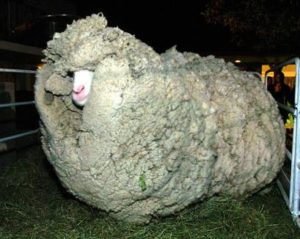 There are several grades of merino wool, based on the thickness of the fiber:
There are several grades of merino wool, based on the thickness of the fiber:
- <17.5 microns: Ultrafine Merino
- 17.7 – 18.5 microns: Superfine Merino
- 18.5 - 19.5 microns: Fine/Extra Fine Merino
- 19.6 – 20.5 microns: Fine medium Merino
- 20.6 – 22.5 microns: Medium Merino
- 22.6 - <24 microns: Strong Merino
When we think that, on average, a human hair is about 40 – 50 microns thick, we get some idea of how fine merino wool is.
The wool shorn off a sheep is called a fleece – and sometimes “grease wool” because it must still be cleaned to remove oil and lanolin as well as vegetable matter, manure, etc. The fleece is washed, “picked”, “carded” and spun to make it into a yarn.
Yarns can have different weights and thicknesses. “Worsted spinning” converts long fiber lengths into a smooth texture mostly used for fine garments such as tailored suits. Shorter lengths are put through a “woolen spinning” process to produce bulkier yarns.
A yarn is then either knitted or woven into a fabric, dyed, and converted into garments or other household articles. Companies such as Icebreaker and SmartWool have developed manufacturing techniques to optimize the natural qualities of merino and to use merino fabrics for a wide range of products, including sweaters, socks, scarves, leggings, hats, etc to meet the requirements of daily living as well as sports and hobbies.
What distinguishes merino from other fibers?
It is fine but strong
 It’s the fineness of the fiber that gives merino some of its key characteristics: the fibers can bend more than thicker fibers so it is very soft to the touch and doesn’t make you itch; it has high elasticity, which means that garments maintain their shape.
It’s the fineness of the fiber that gives merino some of its key characteristics: the fibers can bend more than thicker fibers so it is very soft to the touch and doesn’t make you itch; it has high elasticity, which means that garments maintain their shape.
Despite its fineness, merino wool is strong and resilient. You can bend it, stretch it, pull it in any direction, some say up to 20 000 or 30 000 times, without any damage.
It can handle moisture
An important and unique characteristic of wool is its ability to handle moisture. It can absorb large amounts of water vapor, and move it away to evaporate in the air. In fact, Merino fiber will feel dry to the touch even if it has absorbed up to 30% of its own weight in moisture. Most other fabrics will feel wet at 7% absorption.
When you wear a wool garment and you get hot, the fiber absorbs moisture vapor from the space between your body and the fabric, so you feel dry. This ability to attract moisture and then to move it to the surface to evaporate is known as “wicking”. We also talk about merino wool “breathing”.
This is one of the reasons that merino is so good as a base layer of clothing, under other heavier outer garments.
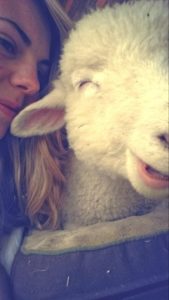 Wool fiber is very like our own bodies – it heats and cools naturally. Wool keeps us warm because its crimp or curl traps pockets of air and becomes an excellent insulator. This, together with wicking, ensures that you stay warm. It is also very lightweight, considering the warmth it provides. This makes merino garments popular for skiing and other outdoor activities.
Wool fiber is very like our own bodies – it heats and cools naturally. Wool keeps us warm because its crimp or curl traps pockets of air and becomes an excellent insulator. This, together with wicking, ensures that you stay warm. It is also very lightweight, considering the warmth it provides. This makes merino garments popular for skiing and other outdoor activities.
On the other hand, if you are hot, the moisture that has been absorbed into the fiber evaporates, and this creates a cooling effect on the air between your skin and the fabric. So, it’s also a great choice for summer activities.
Further benefits related to wool’s wicking ability is that it is non-static, so it does not cling to your body, drapes beautifully and does not attract dust.
So, it’s no wonder that merino is recommended for sports clothing, baby clothing, high-end fashion wear as well as day to day wear.
It is easy to care for
Merino wool garments are anti-wrinkle because the fibers are like coiled springs that go back to their original shape even after being bent. This same elasticity makes woolen garments very comfortable to wear and long lasting, as they stretch with the wearer and then return to their shape rather than sagging or wrinkling.
It is Odor-resistant
 Wool’s ability to manage moisture plus the lanolin coating on merino fibers mean that bacteria – including odor producing bacteria - can’t easily grow. Woolen garments are not likely to smell of sweat. They are also unlikely to cause allergies.
Wool’s ability to manage moisture plus the lanolin coating on merino fibers mean that bacteria – including odor producing bacteria - can’t easily grow. Woolen garments are not likely to smell of sweat. They are also unlikely to cause allergies.
Lanolin naturally protects sheep from the sun, and this UV protection is extended to wearers of merino wool garments.
Wool has high water and nitrogen content and so is a natural fire retardant. It will not melt or stick to your skin in the case of fire and will stop burning as soon as it is removed from a flame.
What’s the difference between Merino and other wools?
Wool is the name given to spun fibers from the hair of several animals, but, technically, wool comes from sheep (Dorset, Lincoln, Merino, etc) and hair comes from other animals (eg mohair and cashmere from goats, alpaca from alpacas and angora from rabbits). There is much debate about which is superior.
Merino vs other sheep
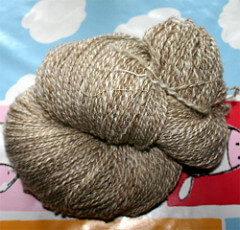 In general merino wool is much finer than the wool of other sheep, and so it bends when it presses against the skin, rather than pricking like thicker fibers, so it is less likely to create an itch.
In general merino wool is much finer than the wool of other sheep, and so it bends when it presses against the skin, rather than pricking like thicker fibers, so it is less likely to create an itch.
Many people have thought that the itch caused by wool products is an allergic reaction, possibly to lanolin, but studies at Massachusetts General Hospital have shown that this is very rare. People find a fabric to be itchy and irritating if more than 5% of its fibers are thicker than 30 microns – and because merino wool is so fine it is unlikely to cause itch.
- Lambswool is wool from the first shearing of a sheep (any breed) – usually at about 7 months. It is very soft and slippery, needs very little processing, and is used for high-grade fabrics.
Merino vs other animals
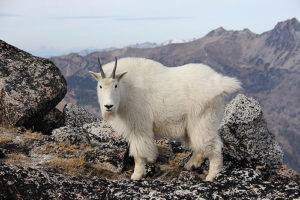
- Cashmere is from the soft undercoat around the neck of cashmere goats. It can be as soft as merino, but it is usually more expensive because a goat will produce only a few ounces per year compared to the 2 to 30 pounds per merino per year. Cashmere is not as elastic and durable as merino, but it is plush, super light and very warm.
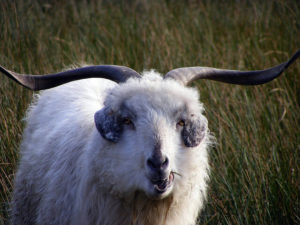
- Mohair is from Angora goats. Undercoat and topcoat hairs are often mixed, which gives mohair its frizzy look. Micron size is from 25 to 40. It is lightweight, very durable and breathable.
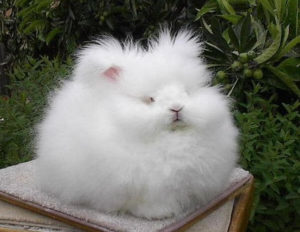 Angora is from Angora rabbits. The fibers are extremely fine (11 microns) and are hollow, so they have very good loft and are very lightweight. They have the best wicking and the highest heat retention of all natural fibers – two and a half times more than wool from sheep. But they are extremely fragile and generally must be combined with other fibers to create yarns and fabrics.
Angora is from Angora rabbits. The fibers are extremely fine (11 microns) and are hollow, so they have very good loft and are very lightweight. They have the best wicking and the highest heat retention of all natural fibers – two and a half times more than wool from sheep. But they are extremely fragile and generally must be combined with other fibers to create yarns and fabrics.
 Alpaca is from alpacas, animals similar to llamas. Their fiber is similar to that of sheep, but is warmer and has no lanolin. So it is hypoallergenic but does not repel water as merino does. Micron thickness ranges from 15 – 40, so some fabrics from alpaca can be quite itchy. It is also quite stiff and is often blended with merino to improve its draping quality. Unique to alpaca is its wide range of natural colors and shades.
Alpaca is from alpacas, animals similar to llamas. Their fiber is similar to that of sheep, but is warmer and has no lanolin. So it is hypoallergenic but does not repel water as merino does. Micron thickness ranges from 15 – 40, so some fabrics from alpaca can be quite itchy. It is also quite stiff and is often blended with merino to improve its draping quality. Unique to alpaca is its wide range of natural colors and shades.
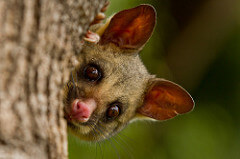 Possum merino is a blend of merino wool and New Zealand possum fur. It is very soft and silky, 50% warmer than merino and 35% warmer than cashmere.
Possum merino is a blend of merino wool and New Zealand possum fur. It is very soft and silky, 50% warmer than merino and 35% warmer than cashmere.
Whether you’re looking for a sweater, socks, a blanket or underwear, merino wool might be the fabric you need.
Written By Kate Mark

Kate is a mid-lifer who quit a growing corporate career to reawaken her passions and her lifelong dream of traveling the world.

